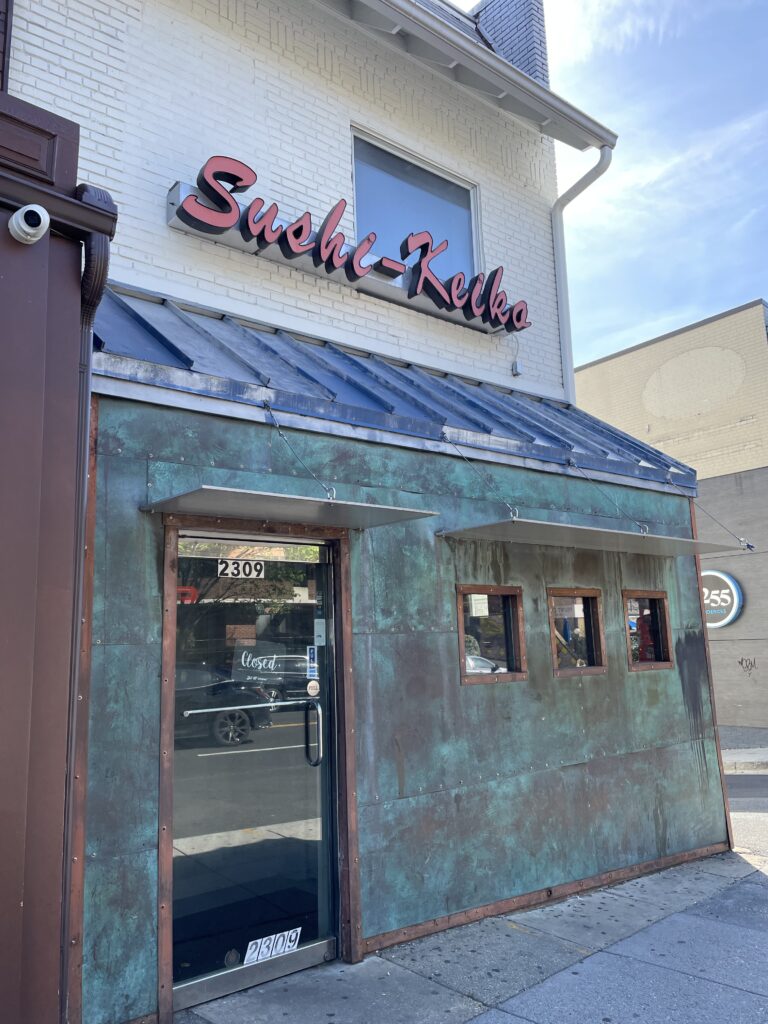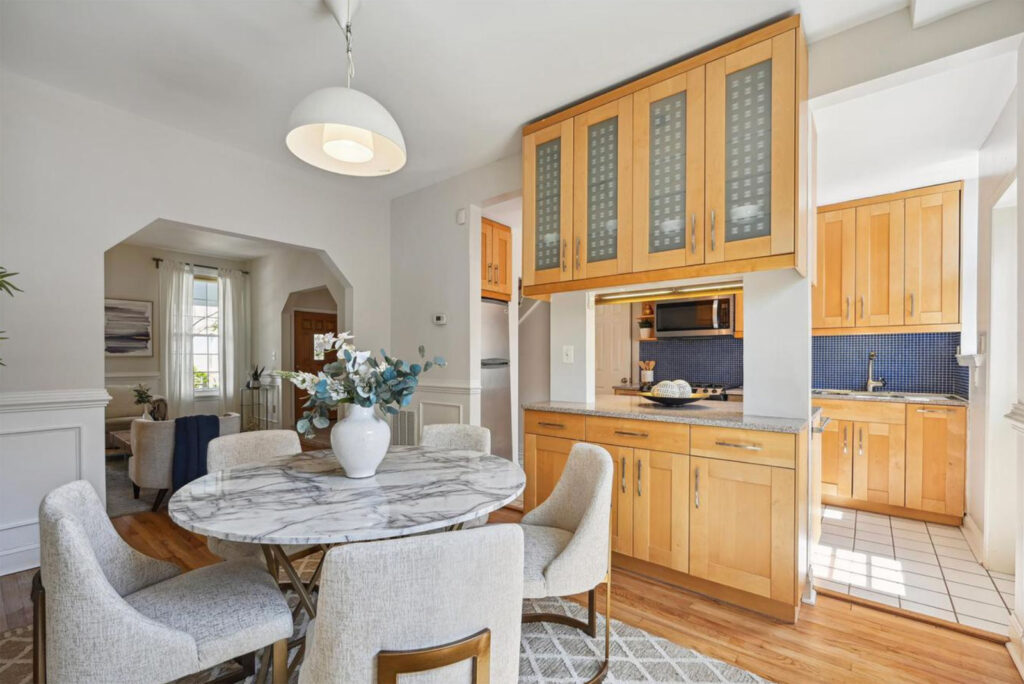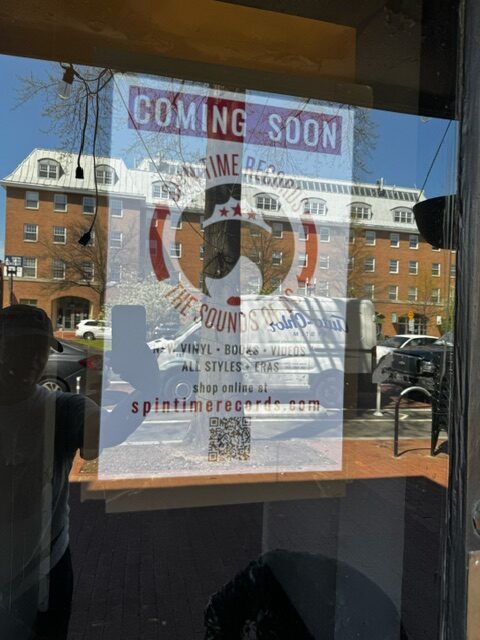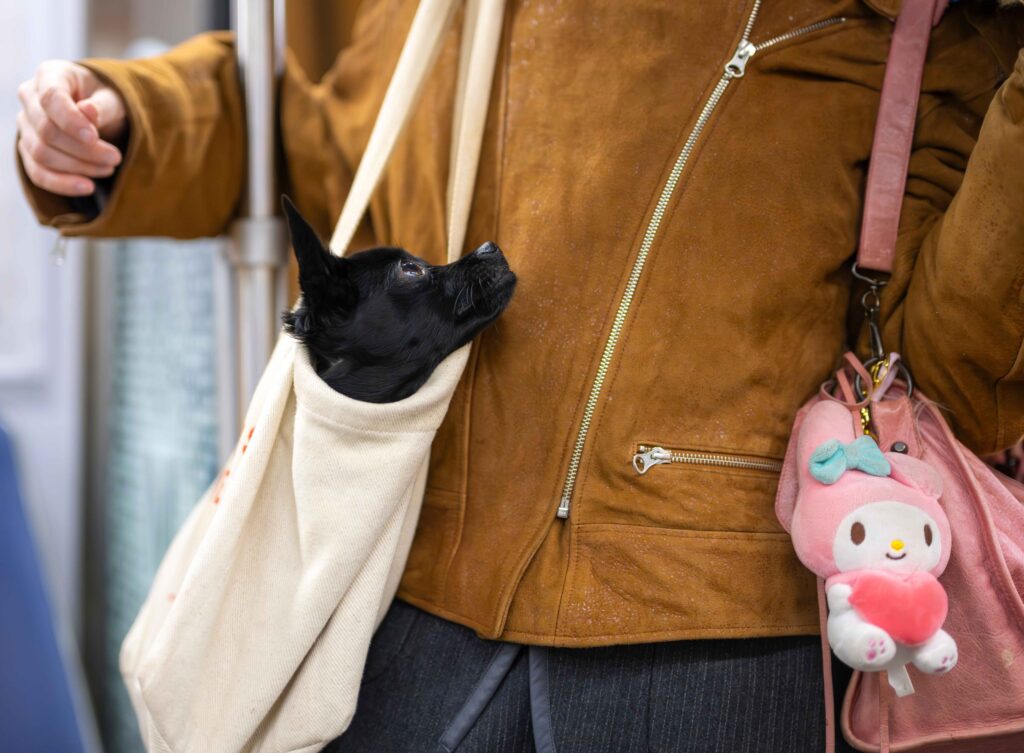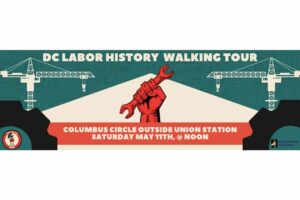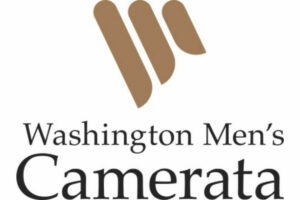Streets of Washington, written by John DeFerrari, covers some of DC’s most interesting buildings and history. John is the author of Historic Restaurants of Washington, D.C.: Capital Eats, published by the History Press, Inc. and also the author of Lost Washington DC.
Running a fashionable supper club in the 1920s was not for the fainthearted. Certainly there was plenty of money to be made, and club owners outdid themselves to create the most exotic destinations imaginable. But these were the days of Prohibition, and the “dry” agents were always on the look-out for places where people seemed to be having a little too much fun. One such place was Le Paradis, one of the DC’s ritziest 1920s nightspots, located at 1 Thomas Circle NW.
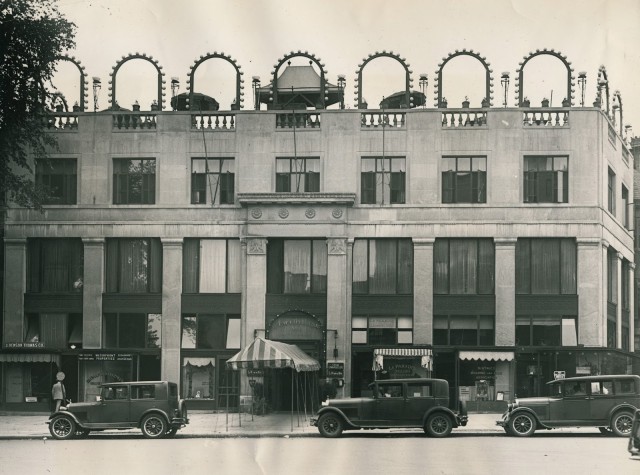
The Le Paradis at 1 Thomas Circle, with its rooftop garden, in 1931 (Author’s collection).
Le Paradis was the creation of legendary impresario and bandleader Meyer Davis (1893-1976), who was born in nearby Ellicott City, Maryland, and moved to the District as a child with his family. Davis loved music from an early age, starting his own five-member band (which played for $25 an evening), after his high-school orchestra rejected him. In 1914, while he was a law student at George Washington University, his band was breaking new ground playing music for hot new dances like the bunny hug, the turkey trot, and the grizzly bear. Soon his group had a gig playing lunches and dinners at the Willard Hotel, and Davis quickly settled on the supper club scene as his preferred métier. Tall, slim, and balding, Davis had an urbane air that appealed to his wealthy clientele, and his energy and verve in twirling his conductor’s baton seemed to always bring the audience to their feet. In later years, he would be dubbed the “Toscanini of society band leaders.”
By 1922, Davis had several successful bands doing a brisk business in the D.C. area, and he wanted to top his success by opening the city’s finest nightclub. He hired famed New York architect William Lawrence Bottomley (1883-1951), who had decorated the interiors of the best cafes on Broadway, to design Le Paradis on Thomas Circle. Club-goers of that era wanted romance and escapism, and at Davis’ direction, Bottomley “realized his dream of interior design—a dream, the fulfillment of which carries one back to old Spain and sunny Italy—that furnishes soft lighting effects—that furnishes inspiration!” as the club’s ad in The Evening Star described it. Davis carefully staged the opening of the large, elegantly appointed club. Several weeks before, he introduced his new Le Paradis Orchestra to Washington through a two-week engagement at Keith’s Theatre on 15th Street, one of city’s most prominent entertainment venues, and it drew rave reviews. With the orchestra as a draw, the new spot opened to wide acclaim. Soon the pricey Le Paradis became exactly what Davis had wanted, the city’s hottest nightclub.
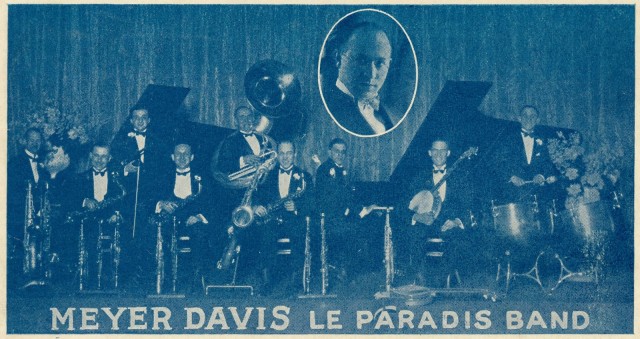
Meyer Davis and his Le Paradis orchestra (author’s collection).
The following May, Davis opened his Cocoanut Grove rooftop garden above the Paradis dining rooms. No expense was spared in designing the Spanish-style lounge. Davis had Bottomley travel to Spain for inspiration and to collect pottery and objets d’art. The Post reported that “Bottomley has incorporated various features of the smart resorts of Deauville and the Riviera into the plans. Brightly striped umbrellas and a profusion of palms and other plants will help to create a general atmosphere of coolness and gayety. Arches of electric lights, alternating with lighting tripods of Grecian design will outline the roof.” As expected, the Cocoanut Grove was an instant success. “Capital jazz lovers thronged the opening of Le Paradis roof garden last night, according to the Post, “the resort being crowded from the dinner hour until the last notes of syncopation floated from the bandstand.”
All this merriment soon drew the attention of both federal and local dry agents charged with enforcing the provisions of the Volstead Act. In the early years of Prohibition, the authorities had staged well-orchestrated raids on lunchrooms and speakeasies, arranging for plenty of photo opportunities of whiskey barrels being hauled out on the sidewalk and then dramatically smashed to bits. The strategy hadn’t worked well. Public reaction had been mostly negative, with the average observer feeling sorry for the poor guy running the lowly lunchroom who had lost everything when the feds swooped down on him. By 1924, the dry agents realized they needed to hit the high-class places too, to show that Prohibition was not a form of class warfare. So they decided to go after those ritzy rooftop gardens, mostly at hotels, where the well-to-do were having so much fun.
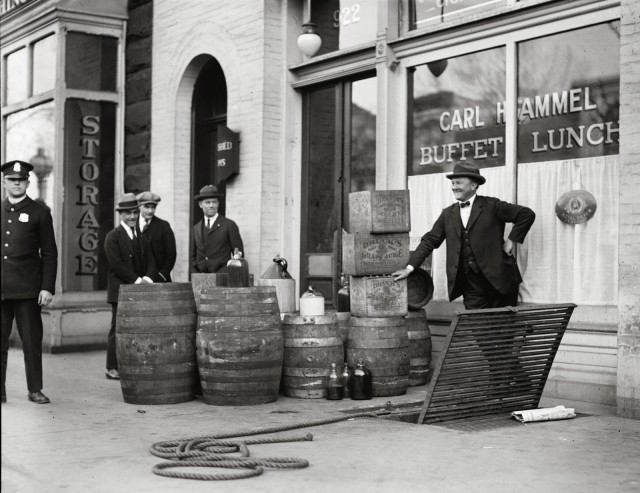
A dry agent smiles for the cameras after conducting a raid on Carl Hammel’s lunchroom on Pennsylvania Avenue in 1923. See our story on Hammel’s here. (Source: Library of Congress).
“The opening shot in a war on ‘wet’ roof gardens here was fired last night when a squad of prohibition agents raided the fashionable Le Paradis roof, opposite Thomas circle, and arrested five patrons on charges of possessing liquor and drinking in public,” the Post reported in July 1924. Many on the crowded rooftop didn’t even notice the arrests; the orchestra played on, and people danced through the entire event, but Harry M. Luckett (1879-1938), who had just been appointed chief of the DC area dry agents a year earlier, threw down the gauntlet: “This is just the beginning,” he told the Post. “Drinking on the roof gardens here must stop and the managers of such places may as well fall in line now. They know that drinking is going on. They know what it means when a patron orders ice and extra glasses. I am tired of it, and I am not going to stand for it any longer. I am going to make life so miserable for these managers they will have to put a stop to it.”
Poor Harry Luckett. People mostly just laughed at bluster like this, and many restaurant managers just brushed off the raids as a sort of tax that they had to pay to stay in business. It was hardly a secret that many people would bring their own booze to supper clubs and order glasses of cracked ice or perhaps ginger ale to mix their own drinks at their tables. The newspapers even occasionally ran photos of attractive women and the disguises they used to hide containers of alcohol in their clothes. One such photo of a “Mlle. Rhea,” was taken in January 1926 when Miss Rhea was dancing in a show at the Keith’s Theatre. During the same vaudeville act, Luckett and his ilk were parodied, as described in the Post: “Joe Browning delivered his ‘A Timely Sermon’ amidst shouts of laughter. Every time he relaxed his grim prohibitionist face for a grimace the audience had hysterics.”
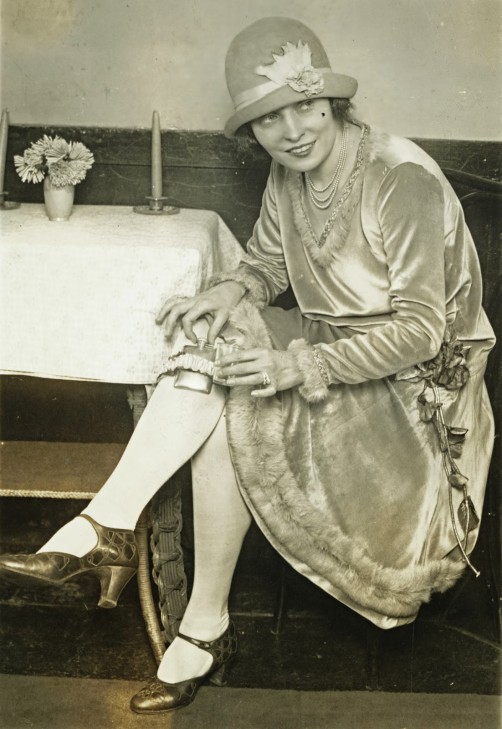
“Mlle. Rhea, dainty dancer who is now in the city as part of the Keith’s program inaugurates the garter flask fad in Washington.” (Source: Library of Congress).
The suave Meyer Davis took all the commotion in stride. After the raid in 1924, he wrote an open letter to Luckett supporting Luckett’s efforts while at the same time absolving himself of any responsibility. “The management cannot go around sniffing glasses, searching prominent business men or college youths of good families, nor watch people like hawks,” he wrote.
The game played on for several more years. Le Paradis and other supper clubs were periodically raided, and indiscreet patrons were arrested. Like other clubs, Le Paradis continued to serve lots of ginger ale and ice-filled glasses. Luckett began sending out undercover agents to observe what really went on at these clubs, and he began building cases against them. Meanwhile Meyer Davis survived a bit of scandal in June 1926 when he squirmed out of an unrelated manslaughter charge. It seems Davis was driving a speeding car one night, under the influence, and sideswiped another car. Davis’s passenger, lawyer Bernard Booker, was killed in the incident, perhaps because his head was leaning out of the car on the side where the collision occurred. Booker’s family sued, and the scandal made all the papers, but Justice John J. Fainter of Hyattsville quickly dismissed the case. Such was Davis’ power and influence.
But keeping the dry agents at bay was another matter. Undaunted by public ridicule, they kept looking for new ways to stop the illicit drinking. In 1925, New York City’s new district attorney, Emory C. Buckner (1888-1941), had tried something new. Rather than go after individual violators and pursue criminal proceedings that rarely had much impact, Buckner instead targeted club owners by seeking injunctions against them as “public nuisances” and temporarily closing them for up to one year, a technique referred to as “padlocking.” Could padlocking work in DC?
In March 1927 U.S. attorneys obtained a temporary restraining order against Le Paradis. The front-page story in the Star explained that “Without making any allegation that liquor is sold or ‘bootlegged’ on the premises of the fashionable cafe, the prohibition enforcement officers allege that a nuisance is being maintained by having a place where persons congregate for the purpose of drinking from their own transported bottles, with the knowledge, connivance, aid, and assistance of the management and its employees.” The petition for the injunction included numerous affidavits by Luckett’s undercover agents, who said they saw glasses of ginger ale and cracked ice being served to tables at Le Paradis and observed liquids being poured into these glasses from bottles marked “gin” and “whisky.” Later they saw “women leave the place in a state of intoxication.” At times they brought their own bottles of “whisky” (it was actually tea) and were told by the waiters that it was all right to drink if the bottles were kept under the table. The agents went on to argue that the kitchen of Le Paradis was too small to support the number of customers that frequented the place if indeed people were there to have dinner. No, they weren’t eating dinner—they were drinking!
While Le Paradis continued to operate throughout 1927, a hearing in the case finally began the following January. Much of the case against the cafe was based on testimonial evidence from 14 witnesses, which Le Paradis’ lawyers vigorously disputed. After Policewoman Hazel K. Mansfield testified she saw 44 intoxicated guests at Le Paradis on two nights in December 1926, much debate ensued on exactly how many people were intoxicated and whether the waiters were facilitating their drinking. Agent Daniel P. Lyons, who accompanied Mansfield, said he saw 13 empty bottles lying under vacated tables as he left the cafe on one occasion. Mansfield said she saw waiters scooping up these “dead soldiers” after guests had left and covering them with tablecloths. She said the waiters told her that barrels of bottles were regularly collected at the end of the evening.
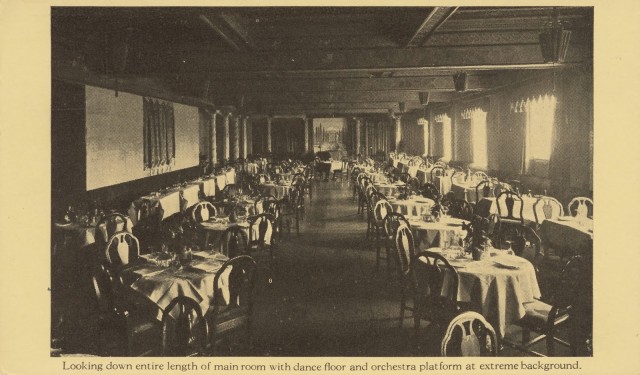
Postcard view of the third-floor Le Paradis dining room, where Prohibition agents made their observations (Author’s collection).
Attorneys for Davis and the other owners of the cafe countered that it was nearly impossible for them to police the actions of their guests. For example, many diplomats patronized the cafe, and they had immunity from the Volstead Act and thus were free to drink as they pleased. The government responded with more witnesses testifying to the debauchery that supposedly went on. Harry N. Douthitt, secretary of the Citizen’s Service Association, stated that when he visited Le Paradis “a woman in one party became so intoxicated that she staggered to the dance floor and later started to go on the floor, but was restrained by her escort.” Of course, the club’s witnesses swore they saw no drinking or disorderly conduct. Howe Totten, owner of the building, said that he “saw no disorder and considered the place was well conducted and was patronized by the nicest people.” Davis himself took the stand and said he could never recall seeing any patron drinking alcohol and that he had instructed all of his employees not to allow anyone to use intoxicants in the cafe.
Judge Charles S. Hatfield of the D.C. Supreme Court was unimpressed by the defense, and in July he ruled against Davis. The temporary injunction became permanent, and Le Paradis was ordered padlocked for one year. Oddly, the order—the first padlocking order in the nation’s capital—applied only to Le Paradis Cafe proper, which was on the third floor. While the popular rooftop garden was not officially padlocked, Davis announced that it would be unable to operate on its own, and the entire building’s operations were closed for the year.
Davis and his associates waited out the year and reopened the famed nightspot in August 1929 with fresh stocks of ginger ale and cracked ice. Crowds readily returned to their favorite cafe and rooftop lounge.
But two years later Le Paradis came to a sudden end after a dramatic but unrelated event. One night in May 1931, Robert S. Montgomery, 27, came to the Club Chanticleer on the second floor of the Le Paradis building and asked for a table near the dance floor. Club manager Charles Garbett told him none was available. Montgomery apparently became enraged, pulled out a gun and shot Garbett, seriously wounding him. He then tried to flee down the stairs but happened to run into D.C. policeman Jesse Taylor, whom he shot twice and killed. By the time he got outside to the street, Montgomery seems to have been overwhelmed by what he had done, and he turned the gun on himself, taking his own life.
Only two weeks later the entire complex was closed for good. An announcement in the Star proclaimed that all the furnishings and equipment of Le Paradis and the Club Chanticleer were to be auctioned off on June 15th to pay the club’s debtors. —Was the triple shooting the final devastating blow for Le Paradis? Or had the cost of holding the property for a year without any income finally done it in? The record is silent. With Le Paradis gone, a new restaurant called Club Michel soon opened in the 1 Thomas Circle space and operated successfully for a number of years, continuing past the end of Prohibition in 1933. A succession of other businesses followed it, until the building was torn down and replaced by a bland office building in the early 1980s.
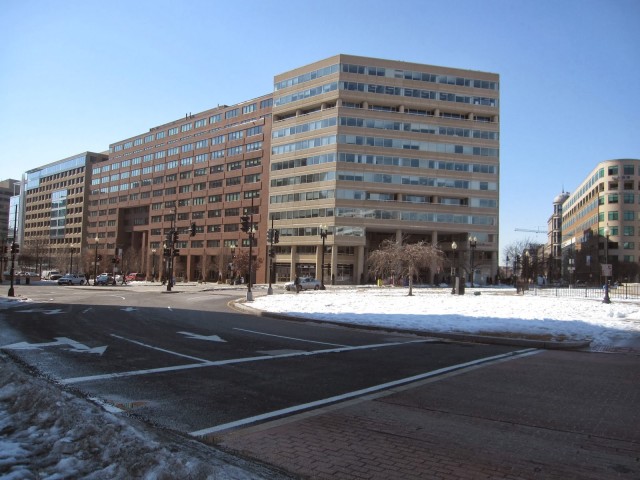
The early 1980s office building currently at 1 Thomas Circle is seen here (photo by the author).
Meanwhile, after his Le Paradis adventure came to an end, Meyer Davis appears to have turned his back on club ownership and its many incumbent hassles. (His second club, called Chateau Le Paradis, had opened in 1925 in suburban Ammendale, Maryland, but burned to the ground the following year.) He began focusing his energy on his already very successful orchestras, developing a national reputation. For decades to come (until his death in 1976) he remained the go-to orchestra leader for high-society events, including lavish New York galas and Broadway shows as well as inaugural balls for Coolidge, Roosevelt, Truman, Eisenhower, and Kennedy. The big money came from the debutante balls, where he was in constant demand despite his steep prices. At his peak in the 1950s and 1960s he managed as many as 80 orchestras and took reservations years in advance from wealthy socialites planning debutante extravaganzas for their infant daughters, nieces, and granddaughters. Ever catering to his conservative clientele, Davis told the Post in 1967 that rock ‘n roll was just a fad, like the grizzly bear, the charleston, and the jitterbug. It would soon fade away. Of course, when you’re as rich and successful as Davis was, you don’t have to always be right.
* * * * *
This article is an expanded version of a story that first appeared in my recent book, Historic Restaurants of Washington, D.C.: Capital Eats. In addition, for a very entertaining and well-written account of Prohibition in the nation’s capital, I highly recommend Garrett Peck’s Prohibition in Washington, D.C.: How Dry We Weren’t (2011). Other sources for this article included Susan Hume Frazer, The Architecture of William Lawrence Bottomley (2007); Michael A. Lerner, Dry Manhattan: Prohibition in New York City (2007); Daniel Okrent, Last Call: The Rise and Fall of Prohibition (2010); and numerous newspaper and magazine articles.
Recent Stories

Unlike our competitors, Well-Paid Maids doesn’t clean your home with harsh chemicals. Instead, we handpick cleaning products rated “safest” by the Environmental Working Group, the leading rating organization regarding product safety.
The reason is threefold.
First, using safe cleaning products ensures toxic chemicals won’t leak into waterways or harm wildlife if disposed of improperly.
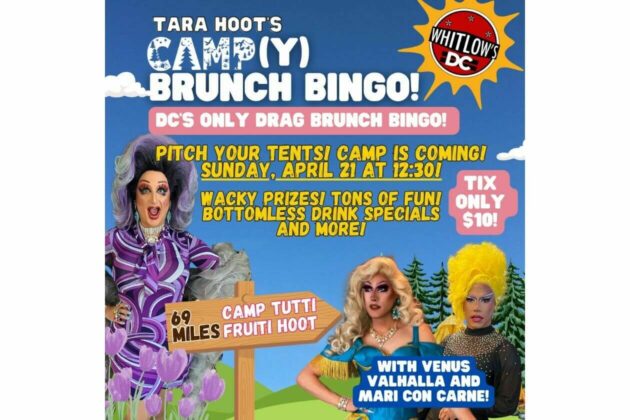
Looking for something campy, ridiculous and totally fun!? Then pitch your tents and grab your pokers and come to DC’s ONLY Drag Brunch Bingo hosted by Tara Hoot at Whitlow’s! Tickets are only $10 and you can add bottomless drinks and tasty entrees. This month we’re featuring performances by the amazing Venus Valhalla and Mari Con Carne!
Get your tickets and come celebrate the fact that the rapture didn’t happen during the eclipse, darlings! We can’t wait to see you on Sunday, April 21 at 12:30!
DC Labor History Walking Tour
Come explore DC’s rich labor history with the Metro DC Democratic Socialists of America and the Labor Heritage Foundation. The free DC Labor History Walking Tour tour will visit several landmarks and pay tribute to the past and ongoing struggle
Frank’s Favorites
Come celebrate and bid farewell to Frank Albinder in his final concert as Music Director of the Washington Men’s Camerata featuring a special program of his most cherished pieces for men’s chorus with works by Ron Jeffers, Peter Schickele, Amy


